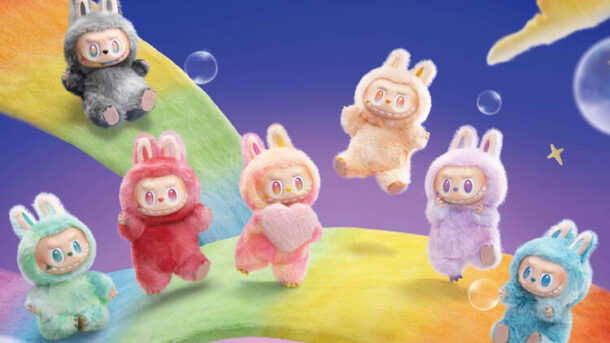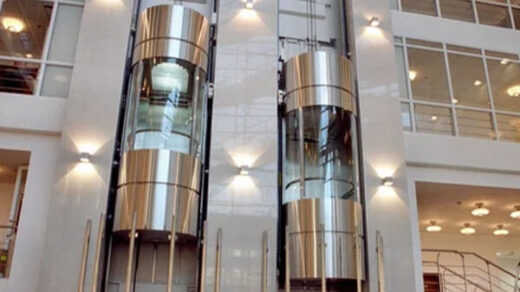It’s 3 a.m. on Paris’ Champs-Elysees, where drizzle dims the streetlights. Hundreds of meters of queue wind along the avenue—young people in overcoats clutch coffee, eyes fixed on the sharp-toothed “little monsters” in the window. This is the scene of a Labubu limited edition sale by Chinese hip toy brand Bubble Mart in France.
The same drama unfolds worldwide: Fans queue all night on London’s Oxford Street, causing chaos that halts sales. Tokyo’s Harajuku store sells out in seven minutes, while Bangkok malls become the only venues requiring full museum-style crowd control.

What is Labubu and what so special about it?
Labubu, now a global phenomenon, draws inspiration from a Nordic forest spirit created by Hong Kong designer Lung Ka-sing. With pointy ears, nine jagged teeth, and a “sneaky” smile, it defies the traditional cuteness of hip toys. Initially controversial, this rebellious design has been embraced by Gen Z as both “savage” and “cute,” fostering a unique emotional bond.
Its value surge is equally striking. At a 2025 spring auction, a 131cm mint Labubu fetched 1.08 million yuan, setting a new record for designer toys. The blind boxes, priced around $40 retail, have seen astronomical resale markups—like the Vans collaboration, which soared 1,284%—earning Labubu the title of “hard currency” in the trendy toy scene.
Is Labubu a product of the emotional economy?
While traditional IPs rely on a complete worldview, Labubu has become an “emotional container” for young people around the world with its open image design. Consumers gain a sense of belonging and individual expression through collecting, modifying and sharing. Data shows that in 2024, more than 40% of young people will consider emotional value as the primary reason for consumption, and Labubu’s “unboxing ceremony” has become a “spiritual first aid kit” to combat life’s stress.
How can POP MART break down the barriers of national borders?
Bubble Mart uses extreme scarcity marketing: hidden models have a 0.69% probability, and regional limits fuel cross-border collecting. Celebrity endorsements from figures like Thai princesses, BLACKPINK’s Lisa, Rihanna, and Beckham turned Labubu from a niche collectible into social currency.
Localized storytelling breaks cultural barriers: Louvre co-branded models in France, gold silk limited editions in Thailand, and Singapore’s Merlion models boost cultural resonance. The #LABUBU TikTok trend (1B+ views) features user-generated content like “Labubu the laborer” cosplay, driving viral IP spread.
From OEM to defining global standards for China’s trendy toys
The Labubu phenomenon reflects China’s hip toy industry chain upgrading. Dongguan, once producing 1/4 of global animation derivatives, now shifts from OEM to high-value sectors. Bubble Mart cuts design-to-market cycles by 40% via real-time global store data analysis. 52TOYS’ “Savadika Panda” blends Thai Hoso salutes with pandas, tripling Japanese market turnover yearly.
Cross-border e-commerce drives growth. During 2025’s overseas “618”, Labubu topped Ssitom’s search rankings. Bubble Mart invites international influencers for live streams from Beijing Paradise, fueling a 475% surge in overseas business. It now operates 500+ stores and 2,500 robotic kiosks across nearly 100 countries.
A new cultural channel, a commercial expression of soft power
When an 11-year-old Qatari girl travels to a Beijing theme park to complete her doll collection, and American teens swap tips via Rednote, Labubu proves it’s more than just merchandise. As CFR expert Kurlantzke notes, “It lets Gen Z explore China through collecting.”
This soft power shift brings economic clout: Bubble Mart raked in 13.04 billion yuan in 2024, with Labubu accounting for 3.04 billion—a 726% year-on-year jump. Industry forecasts show China’s hip toy market will hit 110.1 billion yuan by 2026, growing over 20% annually.
Get excitement and happiness from it
From the blond young people competing for hidden items in Selfridges department store in London, to the fashion enthusiasts lining up in the rain on the streets of Paris, Chinese fashionistas have used their fanged grins to pry open the global cultural consumer market.
Due to the mystique of blind boxes, it has a gambling-like appeal, so much so that China regulates the sale of blind boxes to children. But there are no risks like gambling. It can bring you pleasure and contentment, which is happiness in a box.



